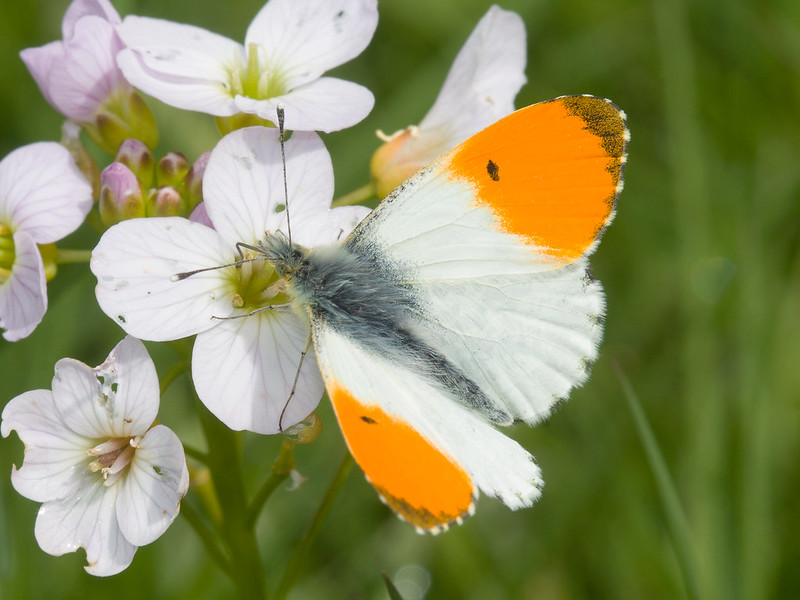Walking from the car park along the entrance path, keep an eye out for Kestrels which hunt over the replanted area to the right and Meadow pipits which breed in the habitat.
Cuckoo flower or Lady’s smock can be seen in the drain along the righthand side of the entrance track during the spring and early summer. This delicate flower starts pink but can often fade to white as the season progresses. This plant, which is a member of the Brassicaceae or cabbage family, is a food plant for Orange-tip butterflies, so named due to the orange colour on the upper wingtips of males. A close inspection of the plant can often reveal a tiny oval-shaped egg on the stem in late May, laid by the Orange-tip. The egg starts off white and later turns orange.
Wood sage can be seen growing on the sunny, south-facing bank on the lefthand side of the track with its subdued light green flowers. It is the food plant of the Speckled yellow moth, a spectacular yellow and black-spotted, day-flying moth that can be seen along this track around May and June.
Keeping a close eye, you may spot the tiny, tawny brown and furry Western bee-fly visiting flowers along the track. These amazing flies parasitise the larvae of ground-nesting solitary bees. The bee-flies hover over the entrance tunnels of solitary bee tunnel entrances and flick eggs into and around the nest opening. The larvae of the bee-fly hatch out and consume the larval bees underground before emerging to pupate into the nectar-feeding and pollinating adult bee-flies.
The Kidney-spot ladybird may also be seen along this section of the nature trail along with the more common 7-spot ladybird. The Kidney-spot ladybird was first recorded in Ireland in 2012 on the outskirts of Cork city and its distribution in Ireland is restricted to the city and hinterland.
Sloe bug, or hairy shieldbug, can also be seen in these grassy margins.
Soon you’ll come to an area with Beech and Noble fir trees. Beech is an introduced species to Ireland but has been naturalised across the landscape and is frequently planted in large estates or more recently as a popular hedging plant.









